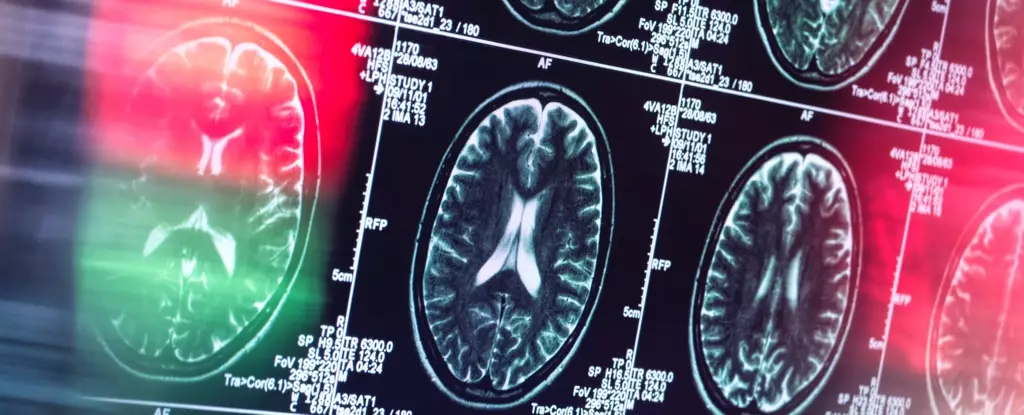Alzheimer’s disease, an affliction affecting millions globally, continues to pose significant challenges for researchers and caregivers alike. In recent years, the quest for an effective treatment has become increasingly fraught with controversy and debate. Central to this issue is the alarming revelation reported by *Science* magazine in July 2022, regarding a pivotal 2006 study in *Nature*. This study had established a critical link between beta-amyloid proteins and Alzheimer’s, which is now alleged to have been based on manipulated data. Such revelations have shattered trust in foundational Alzheimer’s research and raised critical questions about the validity of the scientific process surrounding this debilitating illness.
The approval of aducanumab by the U.S. Food and Drug Administration (FDA) in June 2021 has compounded this turmoil. Many health professionals were taken aback by the move, as the data backing aducanumab’s efficacy was viewed as incomplete and often contradictory. While some assert that it represents a step forward in Alzheimer’s treatment by challenging previously established protocols, others argue it reflects a dangerous complacency in the rush to find a solution. This dichotomy underscores the urgency of discovering a genuine and effective treatment for the millions suffering from Alzheimer’s disease.
For decades, the scientific community has fixated predominantly on beta-amyloid in its research, striving to counter the formation of these perilous protein aggregates believed to drive cognitive decline. Unfortunately, this narrow focus has resulted in a stagnation of innovative therapies, leaving a pressing gap in treatment options for Alzheimer’s patients. As leading researchers point out, there is an immediate need to reassess our strategies and broaden the scope of inquiry into what constitutes Alzheimer’s disease.
Recent explorations, particularly from institutions like the Krembil Brain Institute in Toronto, propose a paradigm shift: Alzheimer’s may not simply be a brain disease, but rather a disorder linked intricately to the brain’s immune response. Rather than viewing beta-amyloid as a harmful entity, researchers are beginning to consider its role as a key player within the brain’s immune defense mechanism. The hypothesis suggests that when the brain experiences trauma or encounters bacterial threats, beta-amyloid is produced as part of a protective response. However, this mechanism becomes problematic if the immune system confuses brain cells with invasive bacteria, leading to chronic misdirected attacks that damage brain tissue and ultimately result in the symptoms characteristic of dementia.
This innovative perspective likens Alzheimer’s to an autoimmune disorder, wherein the brain’s defense mechanisms are geared towards attacking its own cells. This hypothesis opens the door for new avenues of consideration regarding effective interventions. While traditional autoimmune therapies may not be suitable for Alzheimer’s, there lies a potential in exploring alternative immune-regulating pathways that could lead to novel therapeutic strategies.
Emerging theories in the field also include hypotheses linking Alzheimer’s with mitochondrial dysfunction—the tiny but vital cellular structures responsible for energy production—or attributing its onset to infections, such as oral bacteria that might infiltrate the brain. Others are examining the abnormal handling of metals like zinc, copper, or iron within the brain, further diversifying the landscape of possible causative factors behind Alzheimer’s disease.
The situation is pressing; Alzheimer’s currently impacts over 50 million individuals worldwide, with a new diagnosis occurring every three seconds. Families are faced with heart-wrenching challenges as loved ones struggle with memory loss, often failing to recognize lifelong companions. Understanding Alzheimer’s in a broader context is critical—not merely as a neurological condition, but as a growing public health crisis that affects societal structures, caregiving dynamics, and healthcare resources.
As contemporary research begins to embrace a more nuanced understanding of Alzheimer’s, the need for innovative approaches becomes ever more clear. By fostering a climate that encourages diverse hypotheses and interdisciplinary collaboration, we can hope to uncover underlying mechanisms, develop effective treatments, and ultimately enhance the quality of life for those living with the specter of dementia.
The road ahead in Alzheimer’s research remains fraught with uncertainty. However, by shifting our perception and embracing new paradigms, researchers can galvanize efforts to tackle this deeply complex disorder, urgently seeking solutions that resonate with the real needs of millions living with Alzheimer’s. The call for change is not just an academic pursuit; it is an imperative for the health and well-being of individuals and families worldwide.


Leave a Reply